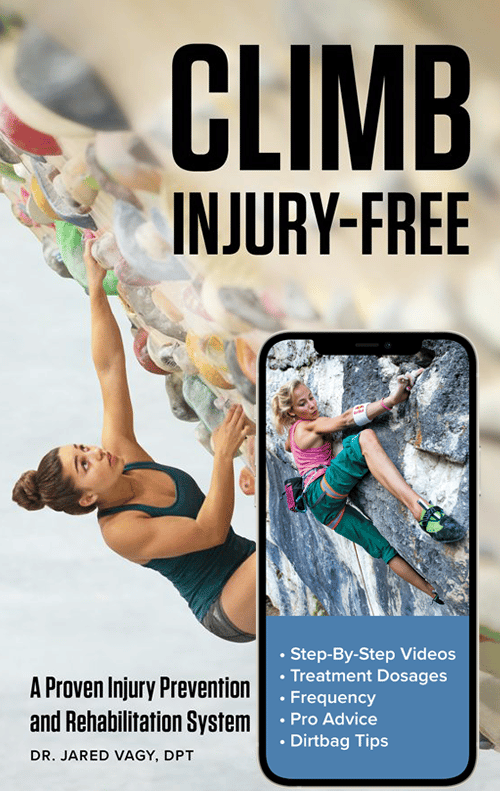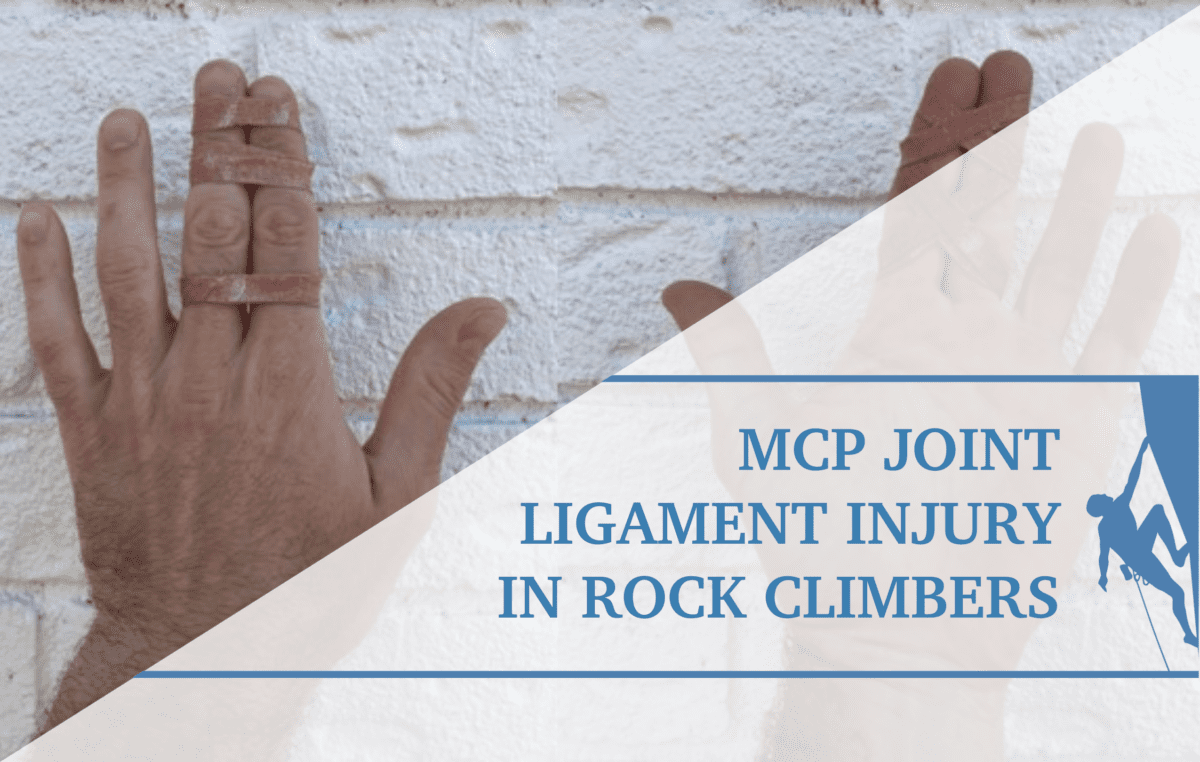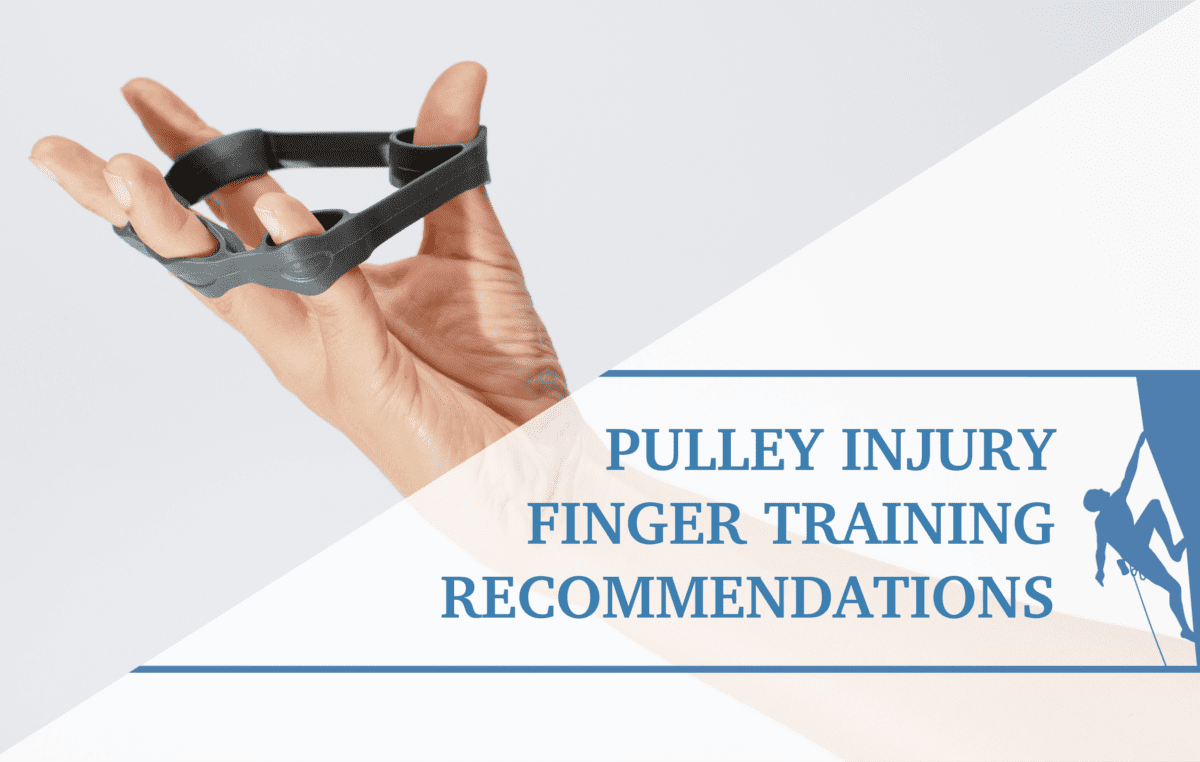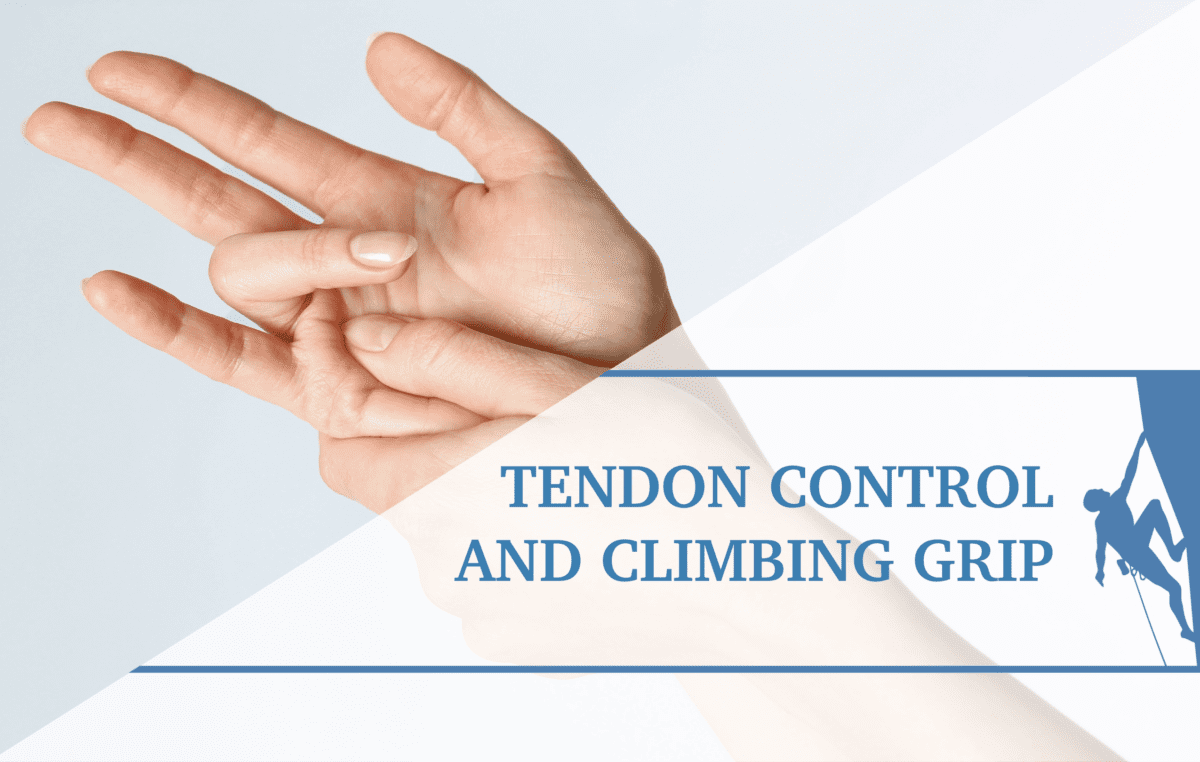Epiphyseal Plate Injury Prevention for Recreational and Competitive Youth Climbers
In recent years there has been an increase in popularity of rock climbing, leading to an increase in the number of climbing related injuries. According to an article by Chang et al, approximately 9 million Americans participate in some form of rock climbing each year.¹ As of July 2019, over 4300 athletes under the age of 19 years old, competed world wide.² The average age of rock climbers is decreasing, putting younger individuals at risk for major injury during the developmental stages of life.³ Climbing related injuries in young climbers is currently outpacing education and awareness about injury prevention. The purpose of this article is to provide information about overuse injuries, and provide preventive measures to reduce the risk of injury to participating athletes, parents, and coaches.
Overuse injuries have the highest incidence of injury in pediatric sports, and rock climbing carries on this trend. According to an article by Meyers et al, repetitive overuse from bouldering and sport climbing had the highest incidence of injury at 1.13 per 1000 hours as compared to acute mechanisms of injury, such as a fall or strenuous move.⁴ Additionally, there is twice the risk of injury in competitive youth climbers when compared to recreational ones.⁴ The most commonly reported injuries occur at the fingers and hands, specifically the growth plates of young climbers as a result of repetitive stress. Oftentimes, these injuries are misdiagnosed as A2 pulley ruptures, which are more prevalent in a skeletally mature climber. Due to lack of knowledge, failure to recognize symptoms, and failure to receive medical attention many injuries in the youth population are likely to go unreported and untreated. Young climbers should receive preventative care for health promotion, which would include education about risk factors associated with overuse injuries.
There are a number of modifiable risk factors to address with young climbers. One thing that can be modified is the amount of time a young athlete spends climbing per week. Increased participation in vigorous physical activity can increase risk of sustaining epiphyseal damage.⁵ This is especially applicable to young competitive climbers who may participate in weekend training sessions in addition to their weekly training regimen.⁵ It is important for young climbers to understand the benefits of altering activity levels with varying levels of intensity during training to allow the body to recover appropriately. A second risk factor for young climbers is overuse of the full crimp gripping pattern. This places the proximal interphalangeal joint in a flexed position and the distal interphalangeal joint in a maximally hyperextended position, which places high compressive forces on growth plates. A third modifiable risk factor comes in the form of nutrition. While BMI is less of an issue with the adolescent population in comparison to adult climbers, younger athletes have been observed with higher risk of unhealthy patterns of wellness like anorexia athletica and the female athlete triad.⁶ These unhealthy patterns of life stem from the fact that competitive rock climbers attempt to be as lean as possible to perform their climbs. It is important for young athletes to understand the importance of proper nutrition for optimal healing and repair of tissues.
Signs and Symptoms
Most common injury reported in young climbers is an epiphyseal plate fracture, also known as a growth plate injury, to the fingers. These sites in long bones are considered to be significantly weaker than surrounding connective tissue, which leaves them susceptible to injury. Signs and symptoms to be aware of include pain on the back of the fingers, or the knuckle, that increases gradually over time, without experiencing a traumatic event (such as a fall), swelling over the knuckle of the affected finger, reduced functional mobility and range of motion in the affected finger, and increased pain when climbing, specifically with smaller climbing holds, or crimps.
Assessment
In order to diagnose an epiphyseal plate injury a trained physical therapist will need to perform an in depth assessment. This will include discussion of symptom onset, training habits, and preferred climbing styles with the individual. Based on signs and symptoms, it may be recommended that the climber seek out diagnostic imaging from their primary care physician, in order to confirm the diagnosis.
The Rock Rehab Pyramid
The rock rehab pyramid serves as the framework for exercise progression. It provides movement exercises, in the form of a dynamic warm up, to appropriately warm and prepare tissues for activity, in order to reduce injury on the wall. Strengthening and progressive loading exercises are listed in order to keep muscles and joints strong, reducing imbalances to improve overall climbing biomechanics. Mobility exercises will help to promote or maintain range of motion in the athletes joints. Finally, in the case of pain or injury, recommendations have been made on how to reduce strain or unload involved tissues in order to facilitate healing.
Movement Exercises: Dynamic Warm-up for the Upper and Lower Extremities
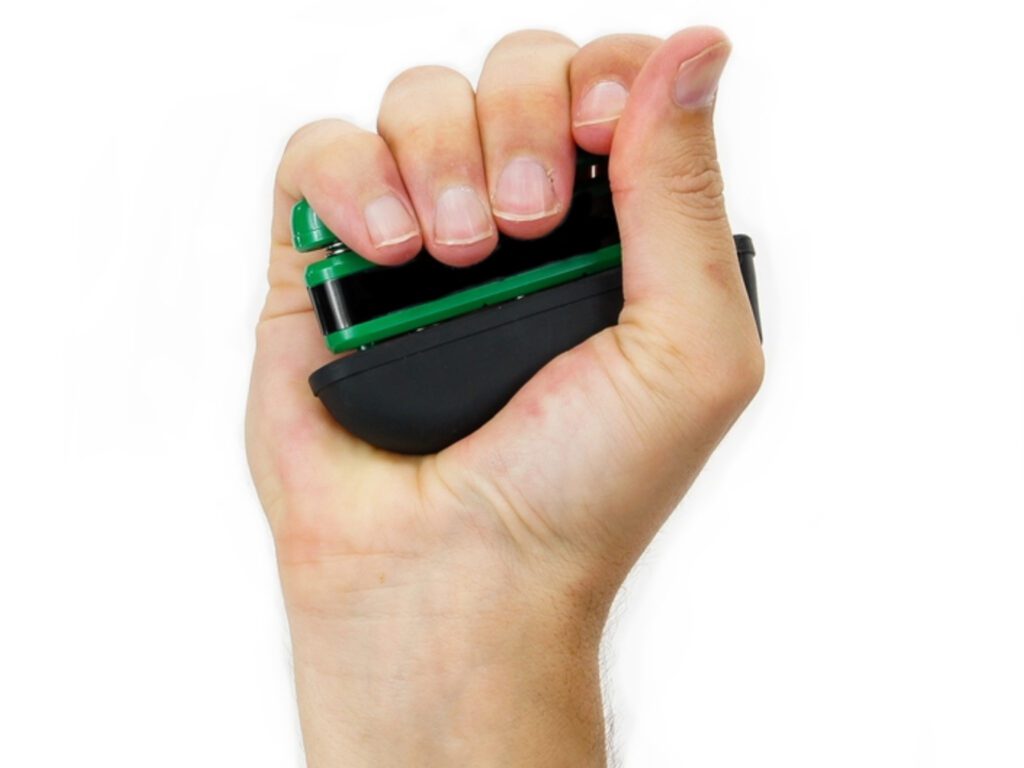
Finger flexor warm up
Using a Digiflex or similar grip strengthening device, squeeze the device alternating fingers 2×10 repetitions. Progress as necessary.
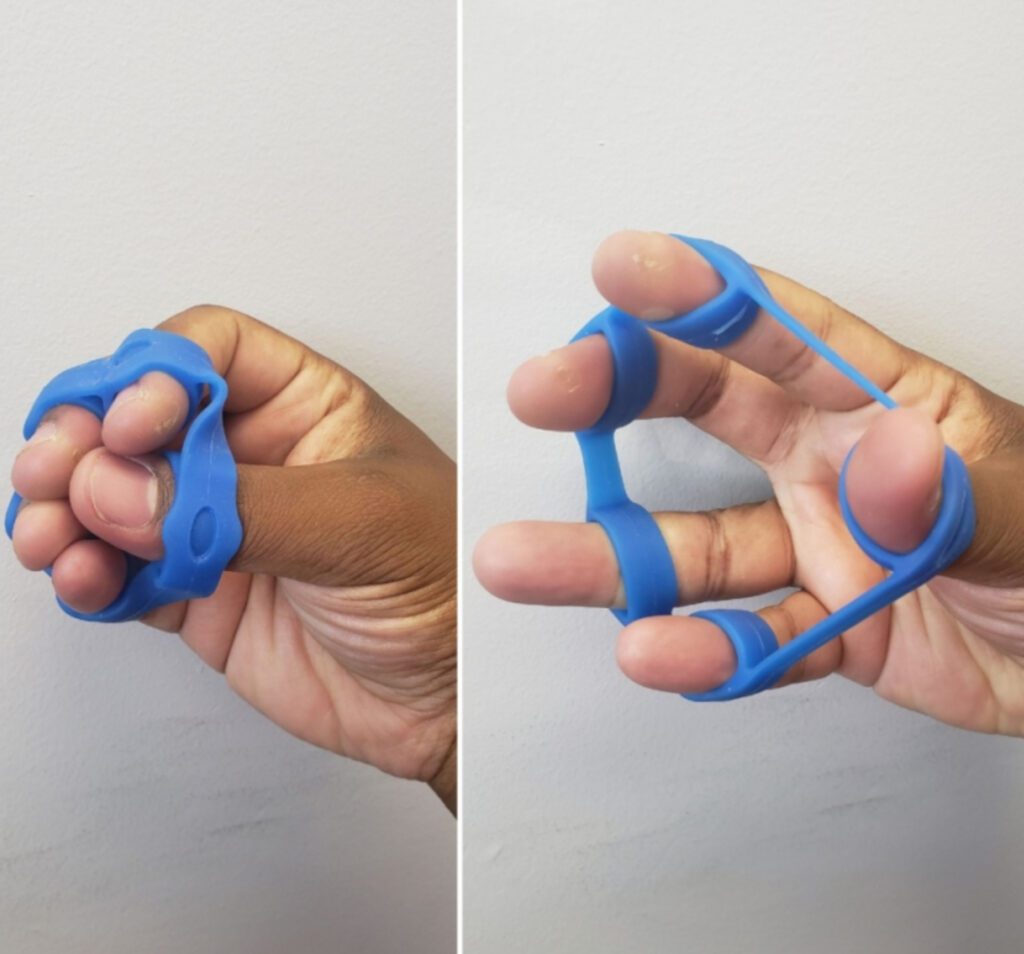
Finger Bands Hand Extensor
Place fingers into each individual finger band, or all fingers in a rubberband. Open your hand by separating fingers. Hold for 5 seconds, close hand, and repeat 2×10 repetitions. Progress as necessary.
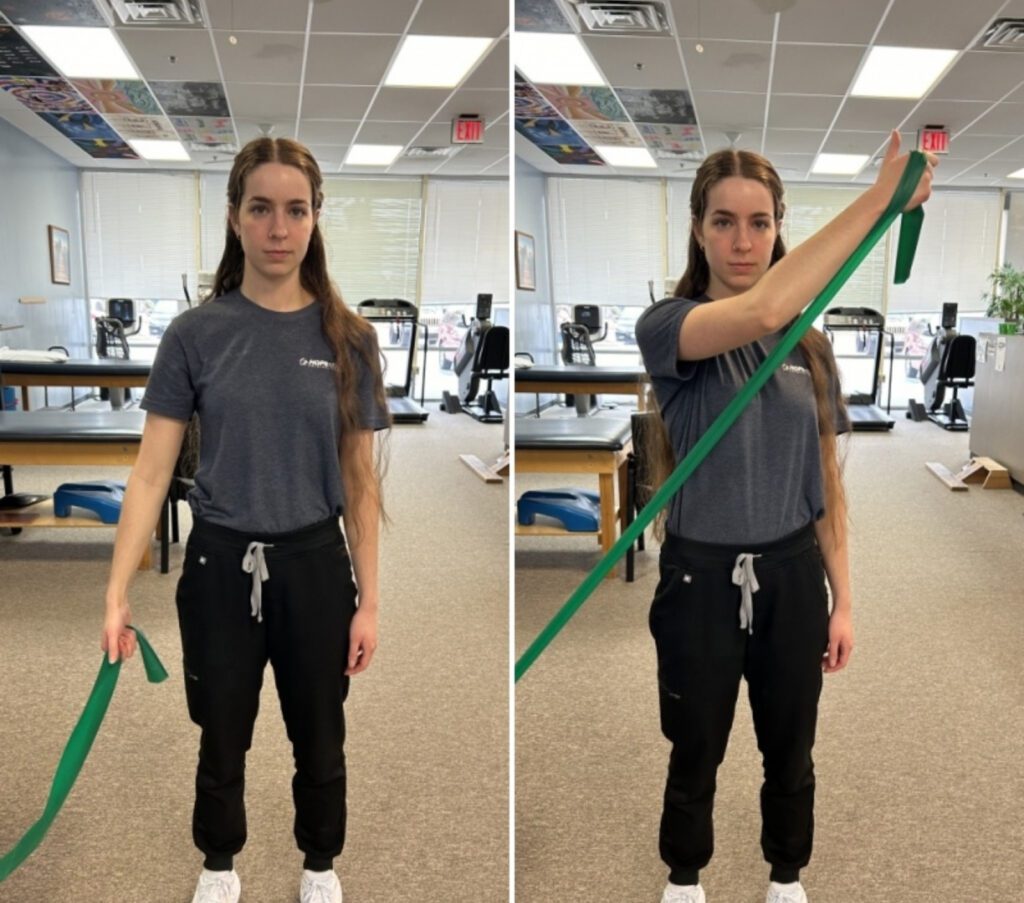
D1 resisted exercise pattern
Tie a Theraband around a low, stable surface, and hold the other end of the band. Step a pace away from the end of the band and hold the band with your palm facing towards your body. Pull your arm across your body with your thumb pointing towards the ceiling and then return to the starting position. Repeat for 2-3 minutes.
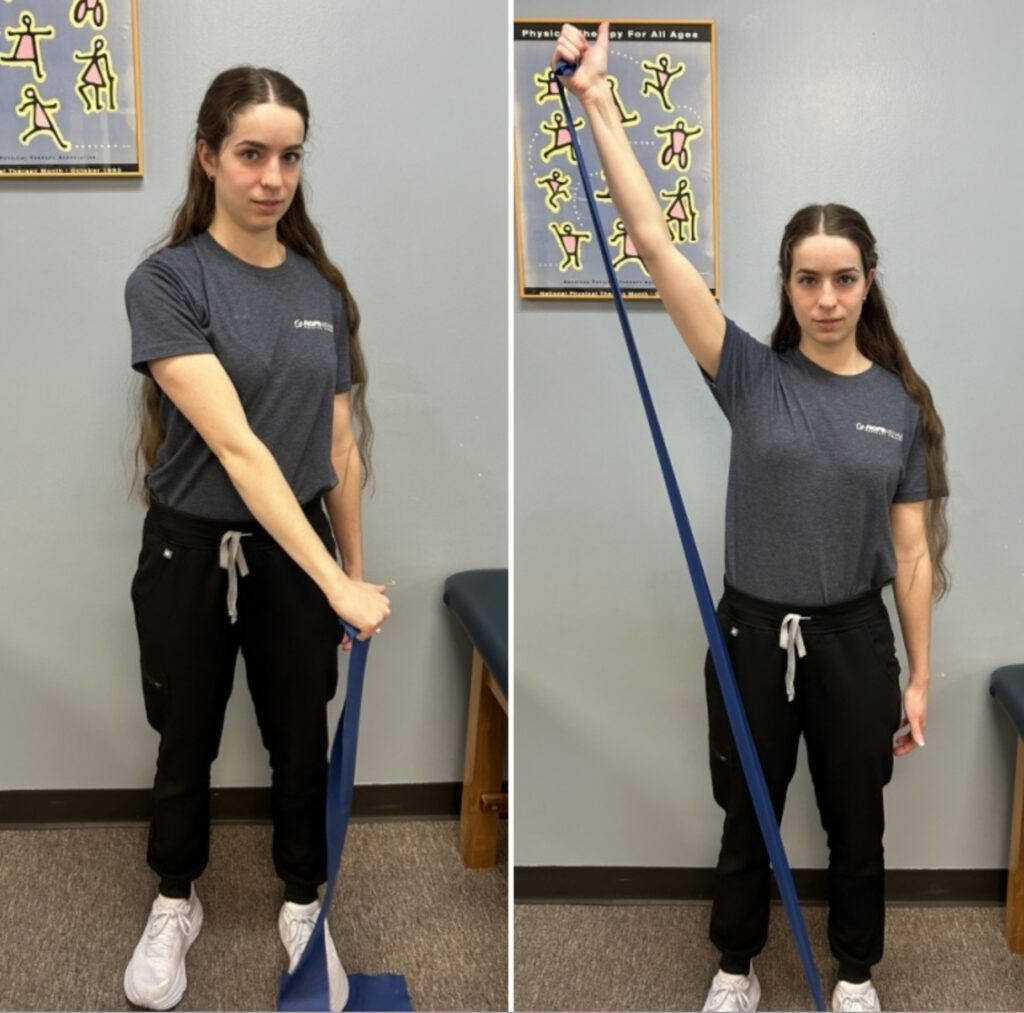
D2 resisted exercise pattern
Place one end of a Theraband under your foot or stable surface, and grab the other end in your hand. Begin with your arm across your body and your thumb facing in towards your body. Pull your arm away from your body with your thumb facing upwards to pull tension on the band. Hold for a second and then return to the starting position, leading with your thumb. Repeat for 2-3 minutes.
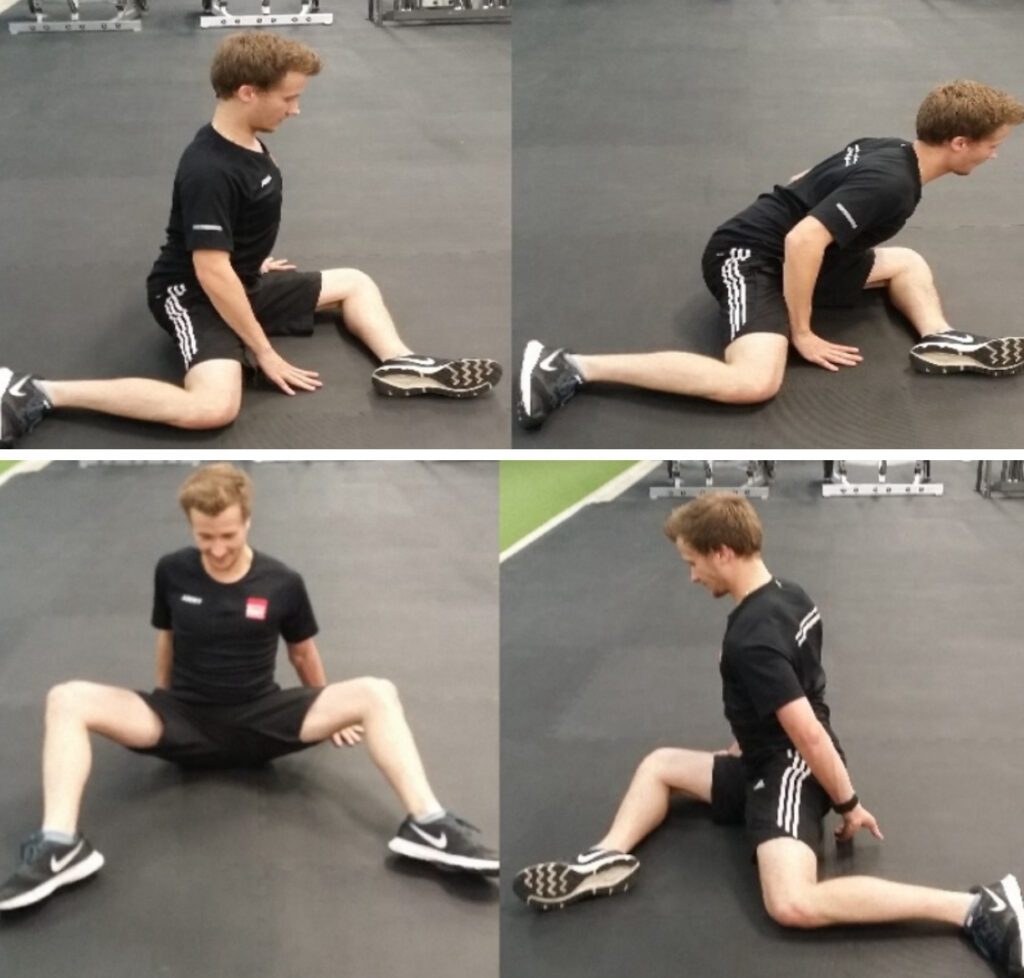
Hip mobility
Start with your legs as shown, with your knees at 90 degree angles. Alternate left and right trying to keep your heels in contact with the ground as you rotate. (You can lean back on your hands if you need some support during the motion).
Strengthening Exercises
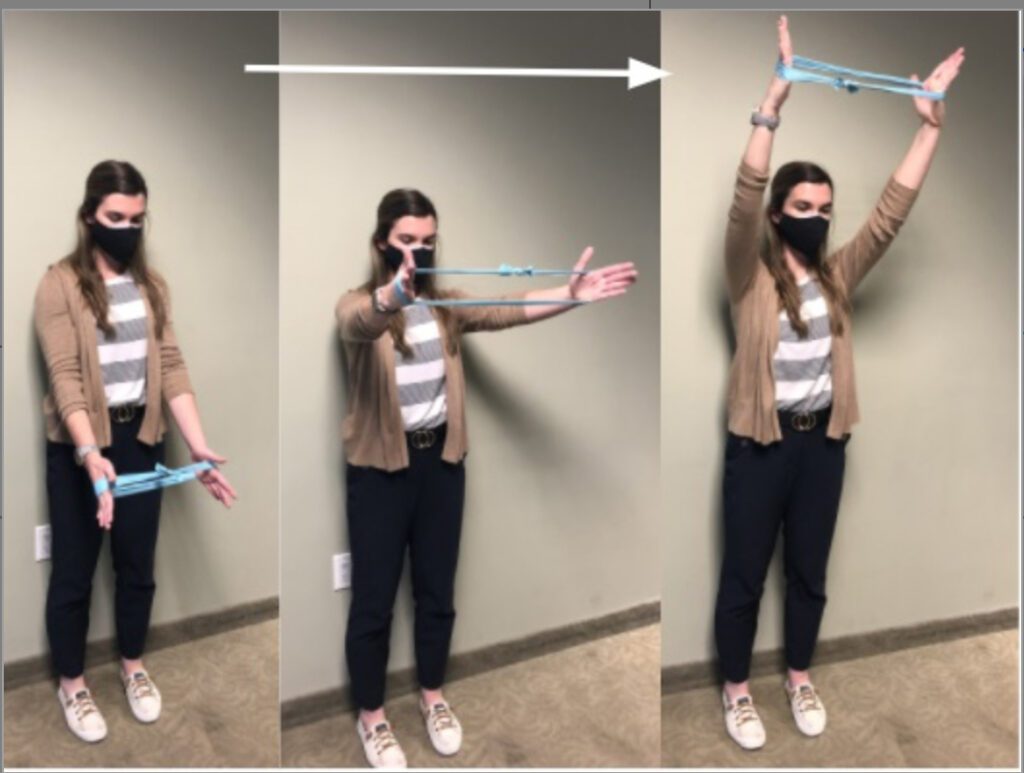
Theraband Rotator Cuff Pulsing to Overhead
Standing with a Theraband in both hands, palms facing each other. Keep elbows straight. Pull your arms apart slightly and continue this pulsing movement as you bring your arms overhead. Keep all movements slow and controlled. Begin performing for 30 seconds x2 and progress as necessary.
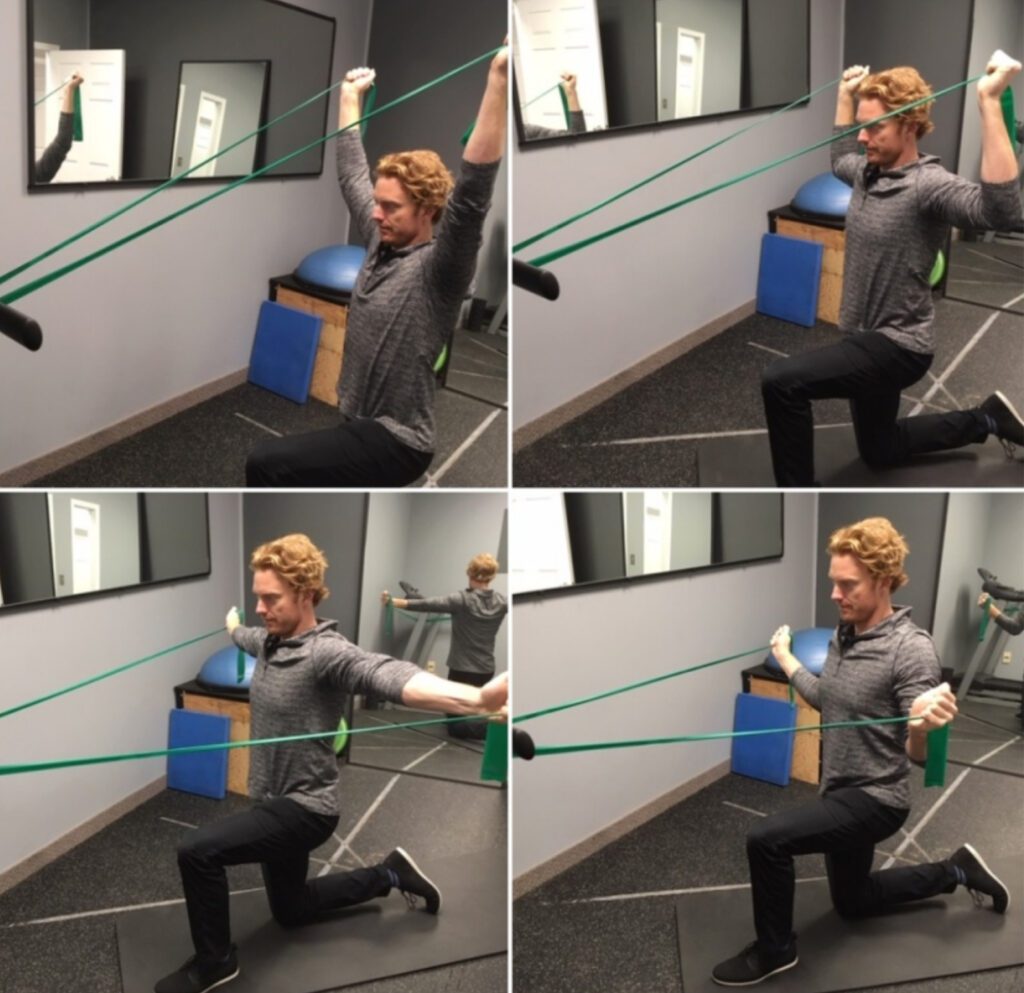
4 Way Scapular Stability Band
Start in a half kneeling position with the band securely anchored. Starting with the arms straight, raise the arms overhead into a “Y”(top left) position and hold. Next, bend the elbows and lower them to shoulder height forming a “U” position and hold. Then, extend the elbows straight to the sides to form a “T” (bottom left) and hold. Lastly, bend the elbows and bring them to the sides to form a “W” and hold. Hold each position for 3-5 seconds, perform 5 sets to start and progress as necessary.
Mobility Exercises
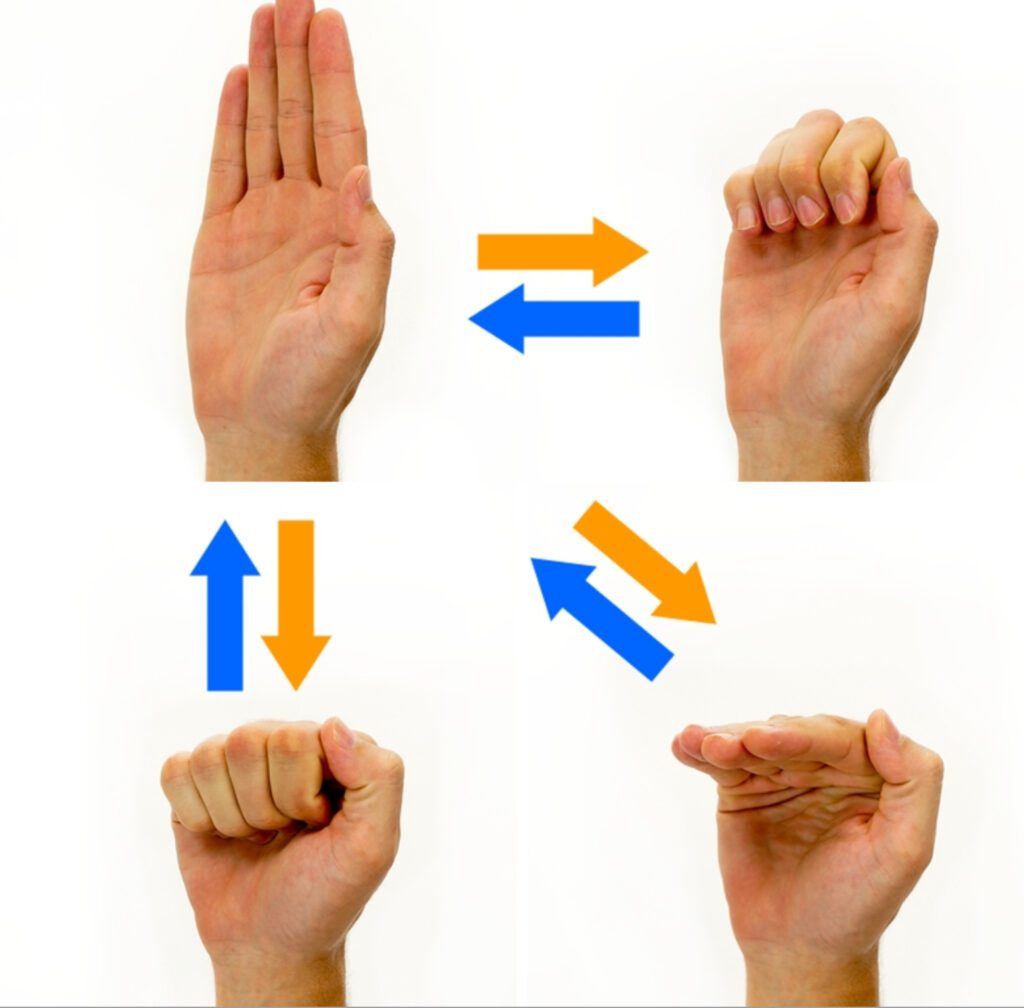
Tendon Glides
Perform the following series of movements with your hand.
Start with an open palm and then bend your fingers to a claw hand as in the upper right image. Next, return to an open palm and then to an “L” hand” as shown in the bottom right image. Next, return to an open palm and then make a fist as in the bottom left image. Finally, return to an open palm and then repeat the series.
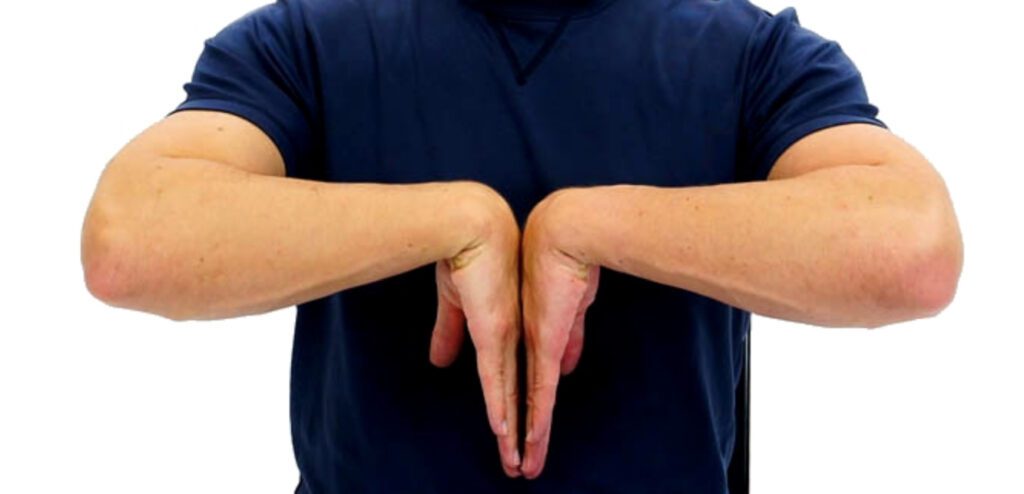
Phalens
Place the back of your hands together to stretch the wrist as shown. Hold for 30-60 seconds x2.
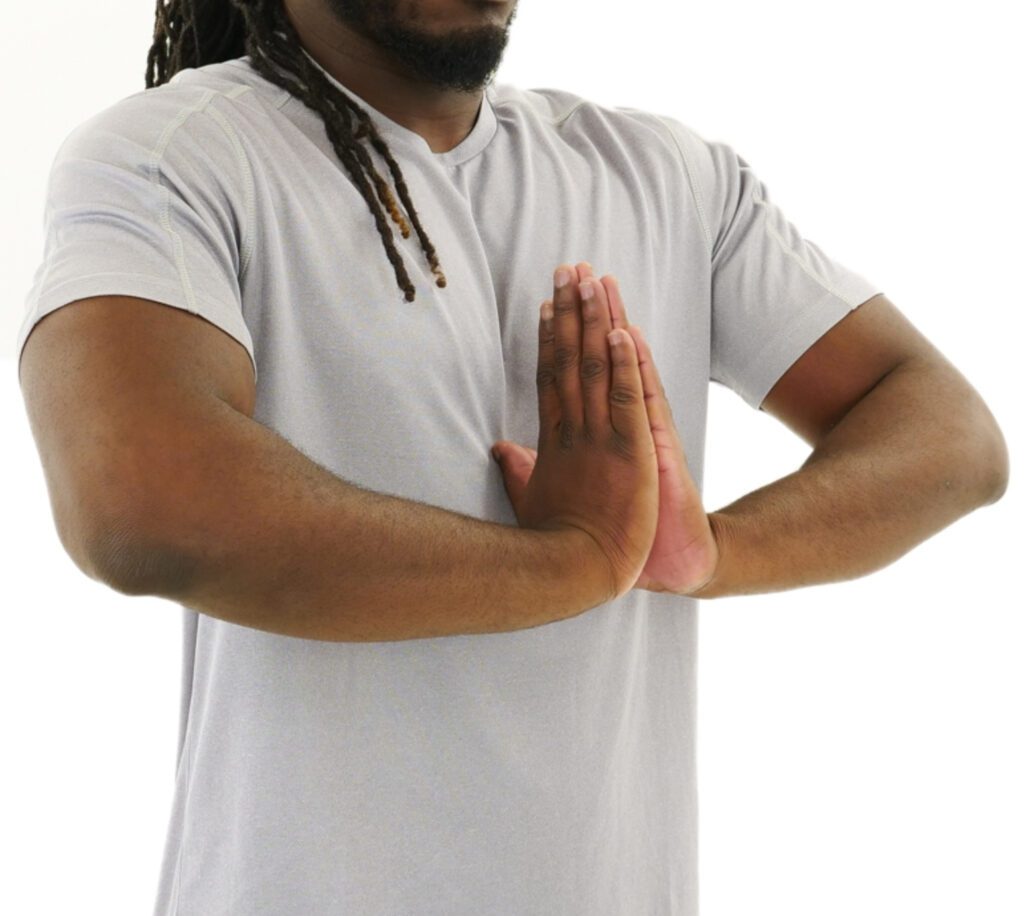
Reverse Phalens
Place the palms of your hands together with your fingers pointed upwards. Then lower your hands in front of your chest as shown to stretch your wrists. Hold for 30-60 seconds x2.
Unloading
Reduce the amount of time spent using crimp grip patterns, limit campus board (especially double dyno campus board) exercises, incorporate days of rest and cross training.
The Research
Do not leave these injuries untreated! If the climber continues to train through the pain, it may lead to pain with daily activities and long term deficits with range of motion. There are ways to limit risk factors associated with overuse injuries. Climbing gyms are advised to restrict the use of certain training devices such as a campus board, to adolescent climbers until growth plate closure, which is usually between ages of 14-16.⁵ No double dyno campus board training until growth plates have closed (around age 18). Reduce excessive crimping, as it puts a lot of stress and strain on tendons, ligaments, and joints in the hands. Avoid adding additional weights to the body during pull-ups, hang-board training, or campus board training. Avoid specializing in one discipline year round, as this increases the likelihood of repetitive stress injuries.
For those who have experienced injuries, a well constructed, appropriately paced return to sport protocol is imperative to prevent future injuries. Meyers et al. suggests a 4 stage return to sport protocol, which this program would also implement to help educate adolescent rock climbers on transitioning back to full fitness without re-aggravating the injury.⁷ The 4 stages are as follows: Week 1 (2x/week for nonconsecutive days, 25% of athlete’s regular practice time), Week 2-3 (3x/week for nonconsecutive days, 50% of athlete’s regular practice time), Week 4-5 (4x/week for a mix of consecutive and nonconsecutive days, 75% of athlete’s regular practice time), Week 6-8 (>4x/week, full return to athlete’s regular practice time).⁷
See a Doctor of Physical Therapy
If left untreated, these injuries can cause long term damage of growth plates leading to joint surface incongruence, resulting in permanent impairment of the affected finger.⁵ Physical therapists will know how to identify epiphyseal plate injuries in young climbers, and make appropriate recommendations for follow up with a primary care physician. They can provide education to athletes, coaches, and parents on how to reduce likelihood of obtaining overuse injuries through prevention programs by utilizing evidence-based practices to support interventions. Be proactive and see a PT, because injury prevention is key!
Author Bio

Kristin Perkoski is a Doctor of Physical Therapy student at the University of St. Augustine, in San Marcos, California. She has been climbing recreationally for the past 6 years, and has an interest in working with athletes, specific to the climbing population.
References
- Chang CY, Torriani M, Huang AJ. Rock Climbing Injuries: Acute and Chronic Repetitive Trauma. Curr Probl Diagn Radiol. 2016 May-Jun;45(3):205-14. doi: 10.1067/j.cpradiol.2015.07.003. Epub 2015 Jul 13. PMID: 26360057.
- Barrile AM, Feng SY, Nesiama JA, Huang C. Injury Rates, Patterns, Mechanisms, and Risk Factors Among Competitive Youth Climbers in the United States. Wilderness Environ Med. 2022;33(1):25-32. doi:10.1016/j.wem.2021.09.005
- Gasbarro L, Padua E, Tancredi V, et al. Joint Mobility Protection during the Developmental Age among Free Climbing Practitioners: A Pilot Study. J Funct Morphol Kinesiol. 2020;5(1):14. Published 2020 Feb 17. doi:10.3390/jfmk5010014
- Meyers RN, Hobbs SL, Howell DR, Provance AJ. Are Adolescent Climbers Aware of the Most Common Youth Climbing Injury and Safe Training Practices?. Int J Environ Res Public Health. 2020;17(3):812. Published 2020 Jan 28. doi:10.3390/ijerph17030812
- Bärtschi N, Scheibler A, Schweizer A. Symptomatic epiphyseal sprains and stress fractures of the finger phalanges in adolescent sport climbers. Hand Surgery and Rehabilitation. Volume 38 Issue 4:p 251-256, September 2019. https://doi.org/10.1016/j.hansur.2019.05.003.
- Schöffl V, Lutter C, Woollings K, Schöffl I. Pediatric and adolescent injury in rock climbing. Research in Sports Medicine. 2018;26(1):91-113. Accessed May 28, 2023.
- Meyers, Rachel N. BA1; Schöffl, Volker R. MD2,3,4,5; Mei-Dan, Omer MD6; Provance, Aaron J. MD6,7. Returning to Climb after Epiphyseal Finger Stress Fracture. Current Sports Medicine Reports 19(11):p 457-462, November 2020. | DOI: 10.1249/JSR.0000000000000770
- Disclaimer – The content here is designed for information & education purposes only and the content is not intended for medical advice.

